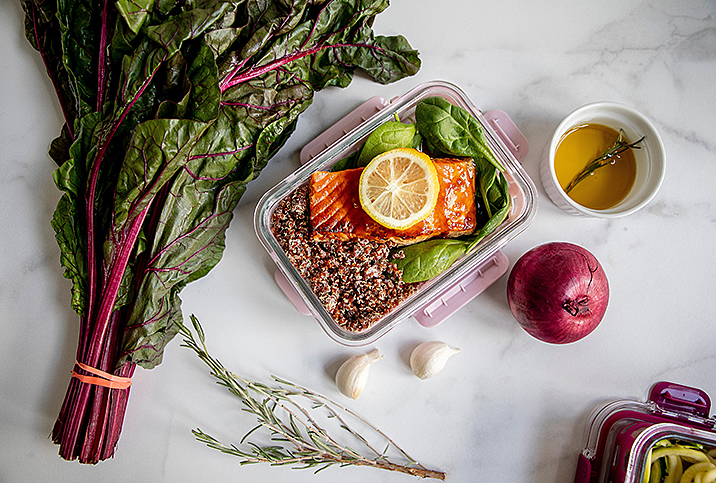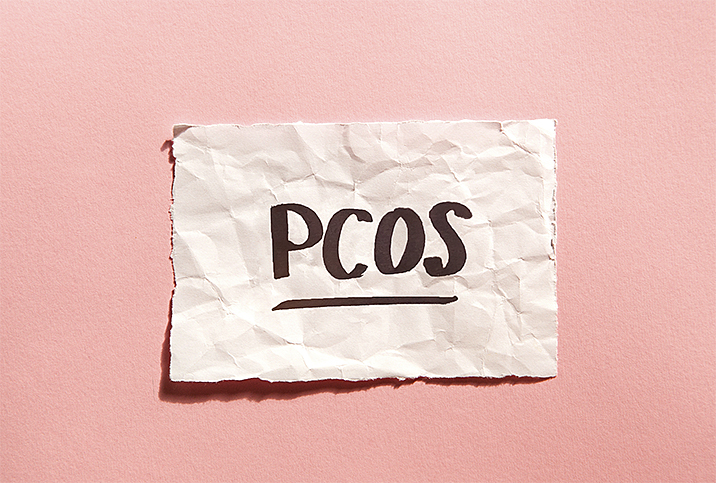How to Eat Right with PCOS

Polycystic ovary syndrome (PCOS) is a hormonal disorder that affects roughly 10 percent of young women. Among that 10 percent, insulin resistance will be present in 30 to 75 percent of women at a healthy weight, and in 70 to 95 percent of obese women. Insulin resistance leads to excess insulin in the body, which can cause the ovaries to produce more testosterone and worsen PCOS.
With high insulin being so common and so impactful among women with PCOS, it might help to understand how this all works.
What insulin does
Insulin is a hormone that regulates your body’s use of carbohydrates. During digestion, the body breaks down carbs from food into glucose. This glucose, or blood sugar, triggers the release of insulin.
Picture insulin as a key that opens up the door to our cells. It enables our body to use blood sugar for energy. Our brain, muscles and organs rely on blood sugar to function.
When our cells become resistant to insulin, it’s as if the key is a bit rusty. Instead of sugar getting into our cells for energy, it stays in our blood, causing damage throughout our body. Left untreated, high blood sugars lead to significant health issues, such as heart disease, blindness, kidney damage and poor wound healing (in cases of uncontrolled diabetes).
How PCOS affects metabolism
Insulin resistance, along with other PCOS-related hormonal imbalances, can make it easier for women to gain weight around the midsection, and such an accumulation of visceral (or abdominal) fat raises the risk for type 2 diabetes, heart disease and infertility. Hormonal imbalances can also increase testosterone production, which leads to further symptoms of polycystic ovary syndrome, such as acne and excessive hair growth.
Regular physical activity can help combat these symptoms and improve the body’s ability to effectively use blood sugar and prevent weight gain. Women should aim for a combination of strength training and cardiovascular exercise to take advantage of short-term and long-term metabolic benefits.
Food choices to help manage PCOS
The Academy of Nutrition and Dietetics advises balanced meals and snacks throughout the day to help people feel their best with polycystic ovarian syndrome. Include some protein and healthy fat with every meal to stabilize blood sugar levels and prevent the ups and downs associated with a high intake of sugar or refined carbohydrates.
Examples of PCOS-friendly foods include:
- Nuts and seeds
- Fish and seafood
- Avocados
- Olives, olive oil
- Eggs
- Cottage cheese or Greek yogurt
- Tofu
- Chicken and turkey
Getting plenty of fruits and vegetables in the diet, along with some beans and whole grains, will provide beneficial fiber for a slow and steady flow of blood sugar. Women should aim for 25 grams of fiber per day. Non-starchy vegetables can be especially helpful in maintaining a healthy weight. Examples include broccoli, asparagus, Brussels sprouts, zucchini, celery, cucumbers, cauliflower, eggplant, peppers and leafy greens. Remember, the more colorful your plate is, the more nutrients you’re getting.
Spotting hidden sugars
Give yourself the upper hand over PCOS and insulin resistance by keeping an eye out for sneaky sources of sugar.
While you probably expect to find sugar in desserts and treats, you may be surprised to learn it’s often added to foods such as granola bars, condiments, prepared soups, spaghetti sauce, frozen meals and packaged snacks. Food manufacturers add sugar during processing to increase the shelf life of food (similar to added sodium). Even foods that don’t taste sweet can have a surprising amount of sugar.
The next time you go grocery shopping, use this simple tip to see how much sugar is in the products you buy. Take the number of sugar grams on the label and divide it by four. That will tell you how many teaspoons (or individual packets, or sugar cubes) are in the product. For instance, a can of regular soda may have 40 grams of sugar, which translates to 10 packets of sugar per can. Swapping sugary beverages for plain water, tea and coffee is an excellent way to cut back on sugar.
While it’s OK to choose sugary treats once in a while, knowing what’s in your food and beverages will help you make educated decisions about whether or not a particular product is worth it. Finding low-sugar options to enjoy makes polycystic ovary syndrome management easier.
For additional support preparing your shopping list, see a registered dietitian or nutritionist to help you develop an individualized meal plan that works for your lifestyle.


















